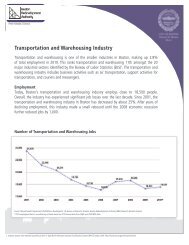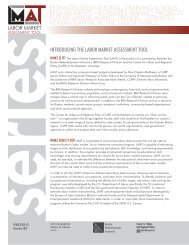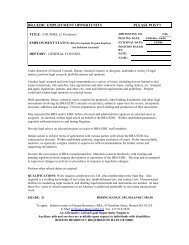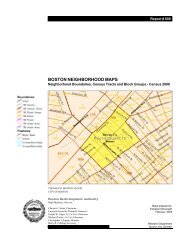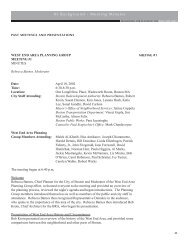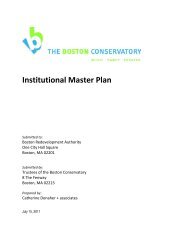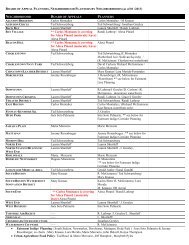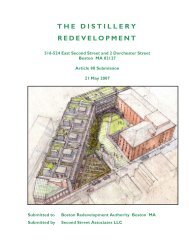Draft Project Impact Report - Boston Redevelopment Authority
Draft Project Impact Report - Boston Redevelopment Authority
Draft Project Impact Report - Boston Redevelopment Authority
You also want an ePaper? Increase the reach of your titles
YUMPU automatically turns print PDFs into web optimized ePapers that Google loves.
Exeter Residences\888 Boylston<br />
Observed Traffic Flow Disturbances<br />
<br />
Existing Traffic Operations<br />
\\Mabos\projects\09916.00\docs\Permits\DPIR\Text\DPIR Chapter 4<br />
Transportation081208-clean.docx<br />
As mentioned in the previous section, queue lengths on Exeter and Blagden Streets<br />
were caused not only by the red signal at Huntington Avenue, but by double parked<br />
vehicles which also contributed to less than ideal traffic flow. During the April 2008<br />
data collection, in addition to queue length observations, several traffic flow<br />
disturbances (in this case double parked vehicles), were also recorded. VHB staff<br />
logged the number of vehicles that were double parked (related to the Copley Square<br />
and Marriott hotels valet, delivery or loading operations) on Exeter Street and<br />
Blagden Street, for seven days. The observed data collection sheets are provided in<br />
the Technical Appendices.<br />
The logs show that in fact double parking on the street does hinder traffic flow, and<br />
therefore increases queue length, since vehicles have to merge from one lane into the<br />
other in order to pass double parked cars. The merging in turn slows the traffic and<br />
causes a slight delay. Although this delay caused minor interruption to traffic<br />
operations, the overall operations on Exeter Street and Blagden Street did not<br />
significantly change the level of service. Detailed field logs are included in the<br />
Technical Appendices.<br />
Level-of-service (LOS) is the term used to denote the different operating conditions<br />
that occur on a given roadway segment under various traffic volume loads. It is a<br />
qualitative measure of the effect of a number of factors including roadway geometry,<br />
speed, travel delay, freedom to maneuver and safety. Level-of-service provides an<br />
index to the operational qualities of a roadway segment or an intersection. Level-ofservice<br />
designations range from A to F, with LOS A representing the best operating<br />
conditions and LOS F representing the worst operating conditions. The evaluation<br />
criteria used to analyze area intersections and roadways are based on the 2000<br />
Highway Capacity Manual (HCM) 1 and the latest version of the SYNCHRO traffic<br />
software (version 6.0), LOS D or better are considered to be acceptable levels of<br />
service.<br />
Level-of-service designation is calculated differently for signalized and unsignalized<br />
intersections and for roadway links. For signalized intersections, the analysis<br />
considers the operation of each lane or lane group entering the intersection and the<br />
level-of-service designation is for overall conditions at the intersection. For unsignalized<br />
intersections; however, the analysis assumes that traffic on the mainline is<br />
not affected by traffic on the side streets. The level-of-service is only determined for<br />
left turns from the main street and all movements from the minor street. The overall<br />
<br />
1 Transportation Research Board, Highway Capacity Manual, Special <strong>Report</strong> 209, Washington, D.C., 2000<br />
Transportation 4-13



